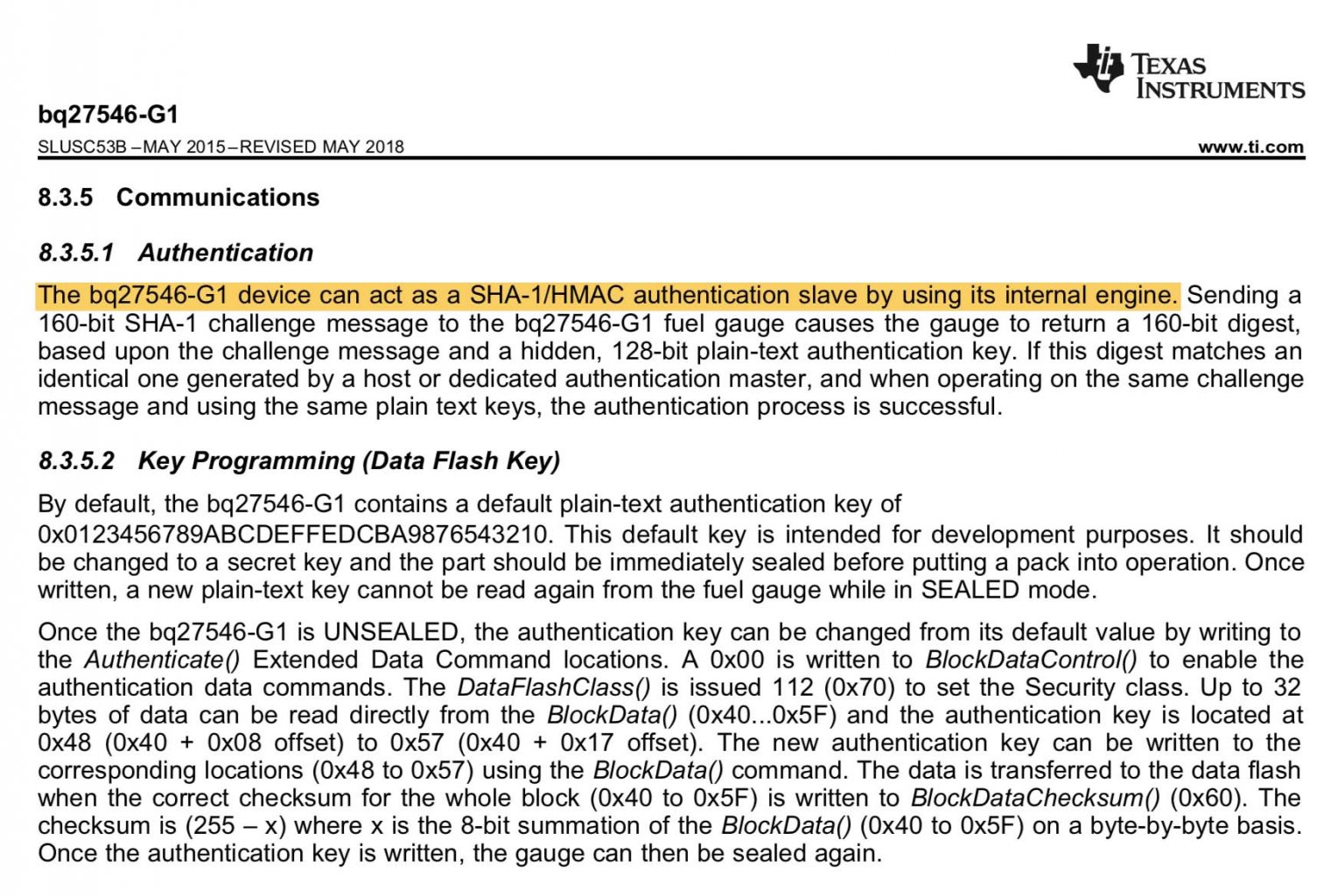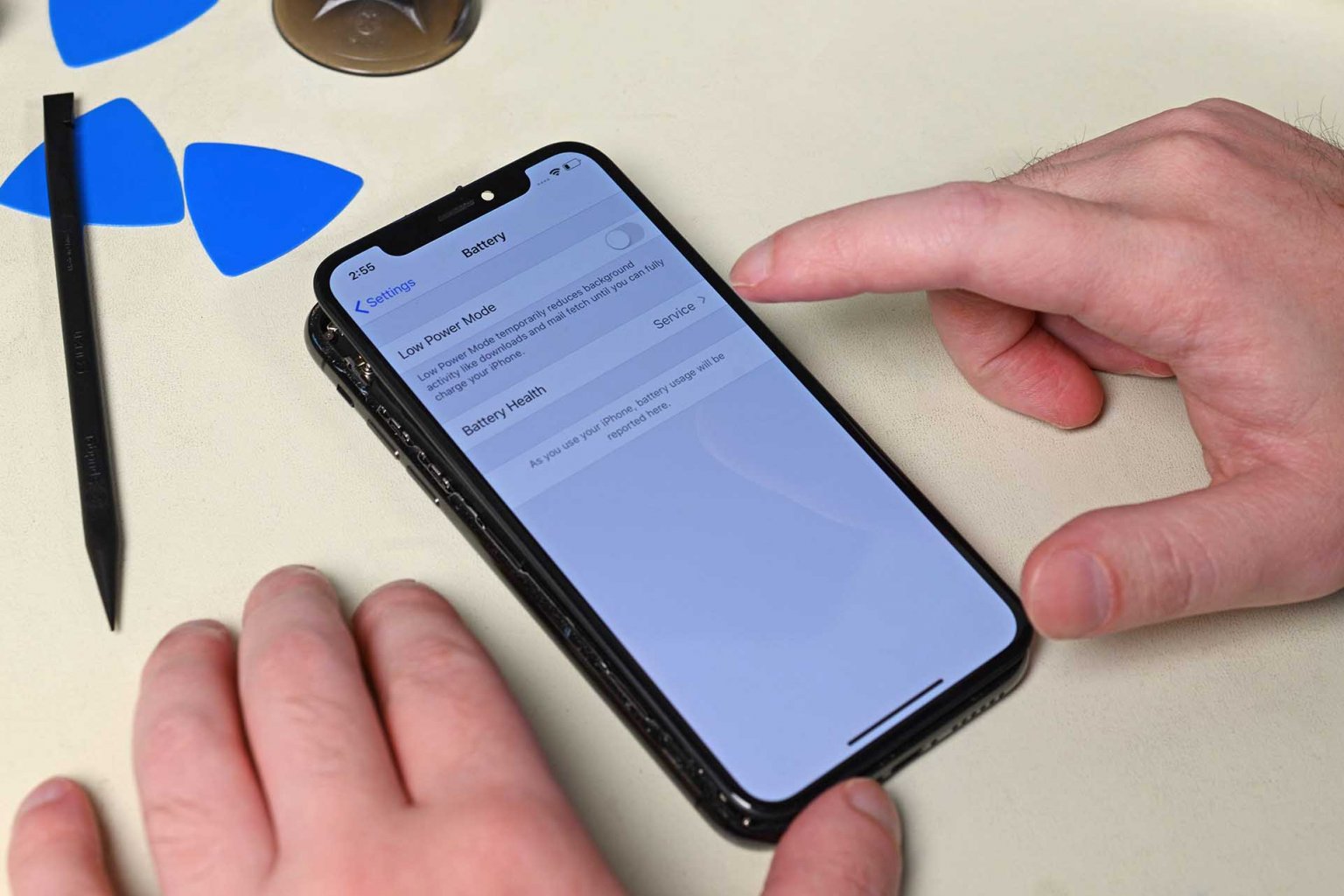By activating a dormant software lock on their newest iPhones, Apple is effectively announcing a drastic new policy: only Apple batteries can go in iPhones, and only they can install them.
If you replace the battery in the newest iPhones, a message indicating you need to service your battery appears in Settings > Battery, next to Battery Health. The “Service” message is normally an indication that the battery is degraded and needs to be replaced. The message still shows up when you put in a brand new battery, however. Here’s the bigger problem: our lab tests confirmed that even when you swap in a genuine Apple battery, the phone will still display the “Service” message.
UPDATE: Apple is now also pairing screens to iPhone logic boards.
It’s not a bug; it’s a feature Apple wants. Unless an Apple Genius or an Apple Authorized Service Provider authenticates a battery to the phone, that phone will never show its battery health and always report a vague, ominous problem.

We first saw this phenomenon in a damning video from Justin at The Art of Repair, and we were able to replicate it on an iPhone XS running both iOS 12 and the iOS 13 beta. Swapping in a new genuine Apple battery from another iPhone XS resulted in the “Service” message popping up in the Battery Health section, followed by an “Important Battery Message” telling us that it’s “unable to verify this iPhone has a genuine Apple battery.” Justin says this only affects the iPhone XR, XS, and XS Max for the time being.
Put simply, Apple is locking batteries to their iPhones at the factory, so whenever you replace the battery yourself—even if you’re using a genuine Apple battery from another iPhone—it will still give you the “Service” message. The only way around this is—you guessed it—paying Apple money to replace your iPhone battery for you. Presumably, their internal diagnostic software can flip the magic bit that resets this “Service” indicator. But Apple refuses to make this software available to anyone but themselves and Apple Authorized Service Providers.
Our friend Justin notes that there’s a Texas Instruments microcontroller on the battery itself that provides information to the iPhone, such as battery capacity, temperature, and how much time until it fully discharges. Apple uses its own proprietary version, but pretty much all smartphone batteries have some version of this chip. The chip used in newer iPhone batteries includes an authentication feature that stores the info for pairing the battery to the iPhone’s logic board. In simple terms, if the battery doesn’t have the unique authentication key the iPhone’s logic board is expecting, you’ll get that “Service” message.

This Is a User-Hostile Choice
Just because a silicon part has a feature doesn’t mean Apple must use it. For years, iPod audio chipsets included AM/FM capabilities that Apple never utilized. This “Service” indicator is the equivalent of a “Check Oil” light that only a Ford dealership can reset, even if you change the oil yourself.
Technically, it is possible to remove the microcontroller chip from the original battery and carefully solder it into the new battery you’re swapping in, restoring the Battery Health feature—but the procedure isn’t for the faint of heart, and it’s an unreasonable requirement for any repair, much less something as simple as a battery swap.

Fortunately, your replacement battery will continue to work perfectly fine, and you’ll get all of the benefits that come with a new battery—we’ve confirmed that this doesn’t throttle the iPhone’s performance on a healthy battery, for example. But you won’t be able to easily see your battery’s health and know when it’s time to replace it.
Then again, this is a huge problem for iPhone owners who may not know about this new, sneaky lockdown, and it will undoubtedly cause confusion: they’ll replace their own battery and notice the “Service” message, then begin troubleshooting a problem that isn’t there.
Apple Is Hiding Your Battery’s Health Data
To make matters worse, as of iOS 10 Apple has blocked third-party battery health apps from accessing most of the battery’s details, including cycle count, which is critical information that tells you whether or not your battery is on the brink of degradation. You can get around this, however, by plugging your iPhone into a Mac and installing a Mac app like coconutBattery. It will show battery health statistics even if your iPhone refuses to show this info in the settings.
This is an ongoing trend, and Apple is making repair increasingly difficult. Back in 2016, they completely bricked iPhones that had been previously repaired, displaying an opaque ”Error 53” if you replaced your Touch ID home button, since they’re paired to the logic board. In fact, DIY home button replacement will still result in Touch ID functionality completely ceasing to exist. More recently, Apple started disabling TrueTone on replacement screens, even if you’re using a genuine Apple screen. Sound familiar?

This pattern of behavior proves, once again, that Apple is out to stop all repairs performed by anyone except Apple themselves. The company claims that using third-party components can compromise the integrity of an iPhone’s functionality, but when genuine Apple parts have the same problem, then clearly it’s not really about third-party components at all: it’s about preventing you from having any autonomy with a device you supposedly own.
You bought it, you own it, you should be able to fix it. It’s that simple. Pairing batteries to iPhones is a gross overreach. It’s yet another instance of purchasing a product, and not being able to fully utilize it—like leasing a car, except you’re paying full price for it.
Fortunately, this is where Right to Repair legislation can step in and save the day. It’s trivial for manufacturers to lock down parts and tie them together, making it easy for them to prevent anyone repairing a device other than themselves for the sake of profits. Let’s do something about it: call your representatives and go to their town halls—state legislators are in recess and visiting their districts. They would love to talk to you.
Update! Apple has issued a response to this, in a statement given to iMore:
“We take the safety of our customers very seriously and want to make sure any battery replacement is done properly. There are now over 1,800 Apple authorized service providers across the US, so our customers have even more convenient access to quality repairs. Last year, we introduced a new feature to notify customers if we were unable to verify that a new, genuine battery was installed by a certified technician following Apple repair processes. This information is there to help protect our customers from damaged, poor quality, or used batteries that can lead to safety or performance issues. This notification does not impact the customer’s ability to use the phone after an unauthorized repair.”
That last sentence has us a bit perplexed. We believe that the “ability to use the phone” involves being able to see the battery’s health information so that you’ll know when it’s time to replace the battery again. It’d be like driving a car without an oil dipstick—how are you supposed to know if you need to add oil?







126 Comments
Error 53 was due to a home button replacement. Just saying. Keep it up ifixit.
kzonenc - Reply
I did a battery replacement on iPhone 6s around ten months ago on iOS 12 something with third party battery and the battery health feature was disabled. HOWEVER, I factory reset my iPhone and the battery health feature restored. Simple as that. I don’t know whether it will work with the latest iPhones on latest iOS but you should try it out. Also, I replaced the screen on the same iPhone a month later and auto-brightness was disabled despite using the same camera and sensor. Factory reset it and auto-brightness is back.
Sorry, I just posted it here so everyone can see.
[deleted] -
Interesting to say that a factory reset fixes all these problems.
At least you have a workaround …
Xavier Jiang -
Yet another reason to never buy an iPhone.
Keets - Reply
@leart78 - No They are! Apple has had this problem for too long!
@keets - I strongly agree, The build quality is nice! but if it compromises Repairability for stupid looks that's a problem!
Ben Capehart -